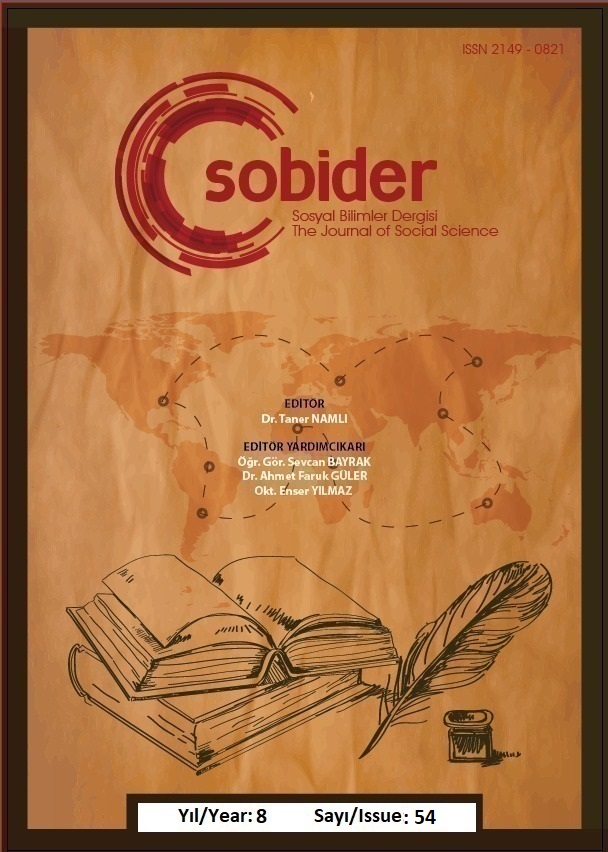Author :
Abstract
1919-1933 yılları arasında Almanya’da faaliyet gösteren Bauhaus Okulu’na mimarlık okumak amacıyla başvuran Gertrude Arndt, burada, bir kadın olarak yönlendirildiği tekstil ve dokuma atölyesine kaydolmuştur. Oldukça verimli ve yaratıcı tekstil tasarımları ortaya koyduğu eğitim sürecini tamamladığında, aldığı eğitime yönelik herhangi bir eylemde bulunmamış ve odak noktası artık fotoğrafçılık olmuştur. Tekstille olan ilişkisi ise sadece fotoğraflarında kullandığı tüller, peçeler, danteller vb. çeşitli kumaşlarla sınırlı kalmıştır. Özellikle, 1929 yılından 1931’e kadar ortaya koyduğu “Maskeli Portreler” adını verdiği kırk üç adet performatif otoportreden oluşan öz temsil serisinde Arndt, farklı kimlikleri, çeşitli kılıklara bürünerek canlandırmış ve ölümsüzleştirmiştir. Kadın ve erkek arasındaki toplumsal ve kültürel olarak inşa edilmiş farklılıkları ifade eden toplumsal cinsiyet kavramı, kadın ve erkeğin sosyal yapı içindeki eşitsizliğinin olumsuz etkilerini yaşamı boyunca deneyimleyen bir kadın olan Arndt’ın çalışmalarının temelini oluşturmuştur.
Bu çalışmada, sanat eleştirmenlerince performatif fotoğraf çalışmalarının öncülerinden kabul edilen, çağdaşlarına ve gelecekteki kadın fotoğraf sanatçılarına ilham olan Gertrude Arndt’ın, fotoğraf sanatçısı kimliği ele alınmaktadır.
Keywords
Abstract
Gertrude Arndt, who applied to the Bauhaus School operating in Germany between 1919-1933, to study architecture, enrolled in the textile and weaving workshop she was directed to because she was a woman. When she completed her training process, which she put forward with highly productive and creative textile designs, she did not take any action towards the education she received and her focus was now on photography. Her relationship with textiles was now limited to the tulle, veils, lace and various fabrics she uses in her photographs. Particularly, from 1929 to 1931, in her self-representation series consisting of fourty three performative self-portraits, which she named "Masked Portraits", Arndt enlivened and immortalized different identities under various disguises. The concept of gender, which expresses the socially and culturally constructed differences between men and women, formed the basis of the work of Arndt, a woman who has experienced the negative effects of the inequality of women and men in the social structure throughout her life.
In this study, the photographer identity of Gertrude Arndt, who is considered by art critics as one of the pioneers of performative photography and inspired her contemporaries and future female photographers, is discussed.
Keywords
- Guttenberger, Anja. Festive and Theatrical -The Mask Photos of Gertrud Arndt and Josef Albers as an Expression of Festival Culture. http://www.bauhaus-imaginista.org. Erişim Tarihi: 27.07.2021.
- Gertrude Arndt. https://www.moma.org/artists/24581. Erişim Tarihi: 08.08.2021.
- Gertrude Arndt. https://www.bauhauskooperation.com Erişim Tarihi: 29.07.2021.
- Martinez, Ezgi Hakan Verdu; Demiral, Akın. (2016). 20. ve 21. Yüzyılda Sanatta Malzeme Olarak Beden; Performans Sanatı. Anadolu Üniversitesi Sanat&Tasarım Dergisi.6(6). Ss: 180-200.
- Morley, Madeleine. (2016). The Many Disguises of Bauhaus Photographer Gertrud Arndt. https://www.anothermag.com/art-photography/8976/the-many-disguises-of-bauhausphotographer-gertrud-arndt. Erişim Tarihi: 27.06.2021.
- Özdal, Işık. (2007). Claude Cahun, Cindy Sherman, İlke Veral’ın Oto-Portrelerinden Yansıyanlar https://dergipark.org.tr/tr/download/article-file/203663. Yedi. Dokuz Eylül Güzel Sanatlar Fakültesi Dergisi. 1(1). Ss: 81-87.
- Tahliayap. (2017). Forgotten Superheroes of Design: Gertrud Arndt. https://wordpress91977.wordpress.com/2017/04/07/forgotten-superheroes-of-designgertrud-arndt/. Erişim Tarihi: 22.05.2021. GÖRSEL KAYNAKLAR
- Resim 3. https://advantageinvintage.co.uk/2013/04/26/gertrud-arndt/
- Resim 7. http://www.weimarberlin.com/2020/04/the-tiller-girls-in-berlin.html





